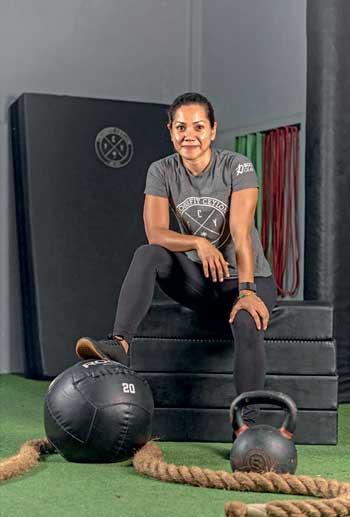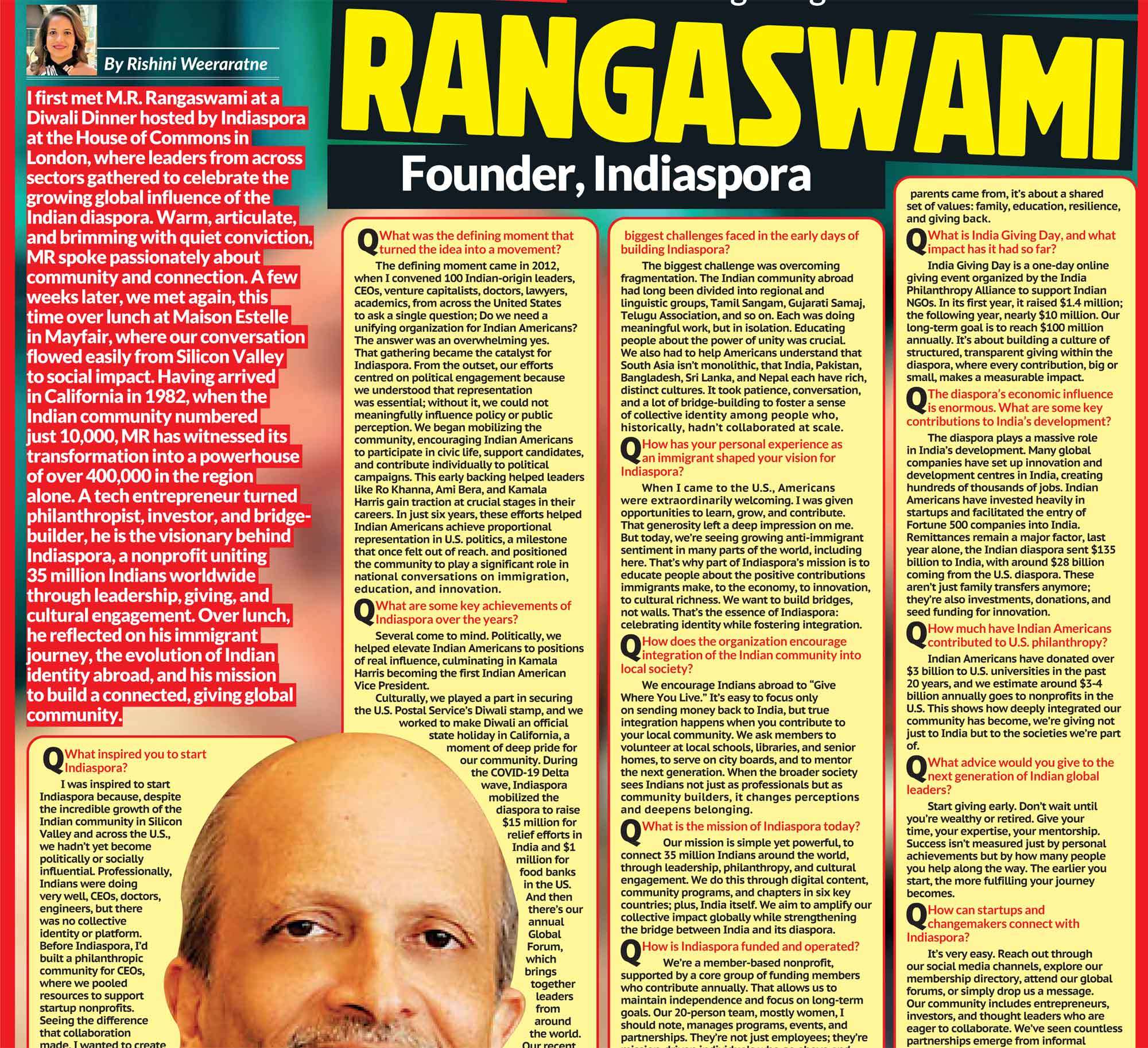Nutrition and Recovery Differently Than Men Part 1
Featuring Alexandria Senanayake
01. Mainstream wellness paints a “pretty” picture on how women’s fitness journey should look like and on how they can achieve it. But most information out there is ambiguous and gravely out of context.
 Progress in fitness is never linear for women for number of reasons - menstrual cycle, pregnancy, pre menopause, menopause are some of the key phases where hormonal changes occur in women and taking into consideration these factors, the intensity of training, nutrition and recovery for women will be different to that
Progress in fitness is never linear for women for number of reasons - menstrual cycle, pregnancy, pre menopause, menopause are some of the key phases where hormonal changes occur in women and taking into consideration these factors, the intensity of training, nutrition and recovery for women will be different to that
of men.
With overwhelming number of women’s fitness contents on Internet, which are often misleading as they are mostly guidelines provided to a wide range of audience, we are left with a disarray of information that’s not shedding light to the real problems and to the solutions needed to overcome these challenges. So, we are here to keep you clear of training wrong and to ensure that you are given accurate health tips backed by applied practice and sound science.
This week, In Raise the Bar, we are thrilled to have Alexandria Senanayake, to guide us through the realm of health and fitness for both women and men.
Alexandria Senanayake is a certified fitness professional and the co-founder of CrossFit Ceylon, Sri Lanka’s premier functional training facility. With a dynamic background in strength, mobility, Alexandria holds a CrossFit Level 2 (CF-L2) certification, as well as specializations in CrossFit Kids, pre-natal and post-natal fitness, and a 300-hour yoga teacher training certification.
Blending the intensity of functional training with the mindfulness of yoga, Alexandria offers a well-rounded, inclusive approach that supports individuals at every stage of life—from youth athletes to new mothers and beyond.
Her coaching philosophy centres on empowering people through education, movement, and community, helping them build strength that’s not just physical; but
deeply sustainable.
Passionate about making fitness accessible, Alexandria continues to lead, coach, and inspire through her work at CrossFit Ceylon and beyond.
Alexi as she’s known to many, points out that “Despite the growing popularity of fitness and athletic training among women, much of what we know about exercise science and sports training is still based on studies conducted primarily on men” Further she says, the gender gap in research has led to training programs, recovery protocols and performance recommendations that often overlook the unique physiological needs of a woman. So, what are the real differences between men and women when it comes to training? How can women optimize our training based on our own unique physiology.
02. KEY DIFFERENCES THAT AFFECT TRAINING: MEN VS. WOMEN
1. Hormonal Fluctuations
Women experience a menstrual cycle that cause fluctuating levels of estrogen and progesterone. These levels of hormones impact our strength, endurance, energy levels, recovery and even heat tolerance.
Follicular phase (first half): Women may feel stronger and more capable of high intensity training.
Luteal phase (second half): Recovery may take longer as sleep is disrupted, and body temperature and fatigue can increase.
2. Body Composition and Muscle Recovery
Women generally have a higher body fat percentage and lower muscle mass compared to men, which affects energy and recovery time. Women typically have a higher proportion of slow twitch (aerobic) muscle fibres this makes us naturally more suitable for endurance activities. Men generally possess more fast-twitch (anerobic) fibres which are more advantageous for strength and power.
03. Here are few top tips recommended by Alexandria to maximize your training:
1. Prioritize strength training.
Aim for a min. 3 sessions per week.
Focus on compound movements (e.g., deadlifts, squats, presses, pulling)
Lift HEAVY weights!
2. FUEL your training sessions.
Do not workout fasted, especially in the morning when cortisol levels are high. It creates an elevated baseline of cortisol which promotes fat storage and breaks down muscle.
Pre-workout:
Protein: Aim for 15g protein before strength training sessions to support muscle maintenance and reduce muscle break down during workouts.
Carbohydrates: Aim for 30g carbohydrates for cardio / endurance sessions to provide readily available energy. For strength training, a moderate amount of carbohydrates is beneficial to fuel the workout without causing energy crashes.
Pre-workout snacks can be taken anywhere from 30mins – 60mins before. If you work out later in the morning a full breakfast can be taken 2 hours prior to training.
Pre-workout:
Consume food within 45 minutes post exercise. This window is crucial for maximizing protein synthesis, replenishing glycogen and minimizing muscle breakdown in women,
Protein: Aim for 25 - 30g of proteins ensure optimal recovery (e.g., eggs, chicken, beef, fish, whey protein).
Carbohydrates: Aim for 30 – 50g of fast digesting carbohydrates (e.g., fruit, oats, rice) to replenish glycogen stores. Quantity will depend on intensity of your training.
3. Hydrate.
Hydrate with water and electrolytes, especially sodium and potassium.
Women tend to lose more sodium in sweat less relative to men and hydration will be critical for our recovery, especially in the luteal phase of our menstrual cycle.
4. Track your menstrual cycle.
Tracking your menstrual cycle can be helpful in understanding your body and adjusting training intensity and recovery activities.
Tracking cycle patterns helps identify what’s normal for you during the difference phases of your cycle. Whilst symptom tracking allows you to connect the physical or emotional symptoms such as mood, energy levels, cramps, bloating, carb cravings etc. to your specific cycle phases.
04.
From the above, we can deduce that, the fundamentals of training remain the same for both men and women. The key difference is in understanding a woman’s unique physiology and in understanding the need for change in how women should fuel their bodies differently and adjust training protocols in response to the changes happening within the body.
This will not only make the fitness journey more enjoyable without frustration but also help women gain consistent long term health progress without over training and under nourishing their bodies. Remember, key to lasting health and fitness journey lies in education and balance!
Until next week, stay connected with us on @raise.thee.bar as we bring to you more from the experts on how and what men and women should do differently to achieve their fitness goals - be it weight loss or fat loss!











